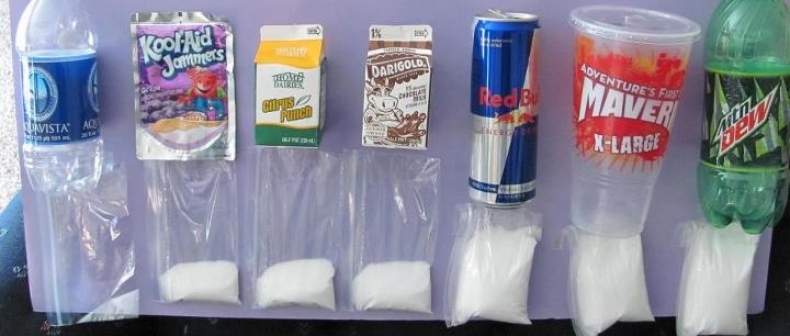
The writing has been on the wall for years.
Sugar can be toxic. Researchers have been sounding the alarm steadily as other potential factors to cardiovascular failure and diabetes have been crossed off the list. Fat? Turns out much of the science on saturated fat and cholesterol missed the mark, so that not only do red meat and eggs still carry their taboo but healthy foods like avocado have been wrongfully tarnished as well. Obesity? Not correlated, explaining why some thin people are afflicted, while certain obese folks are not.
Instead, studies are honing in on fructose as the killer molecule responsible for much of the damage. Exacerbating the issue is that the fear over fat in foods led to a wave of low- and non-fat foods that tasted disgusting, so sugar was used for compensation. Consumers unfortunately embraced these foods as healthy, when they were anything but, especially since fat is a crucial molecule for many bodily functions.
So why didn’t any of this seem to resonate until a piece in the New York Times triggered a continental discussion on how we eat? Michael Moss’s “The Extraordinary Science of Addictive Junk Food,” adapted from his book Salt Sugar Fat gave readers a peek into the science behind their favourite snack foods and just how much work went into making them irresistible to their brains. Suddenly, everywhere I looked, friends were posting the article, at once chilled by its explanation of the brain science behind addictive foods and awed by the engineering marvel.
I myself fell into this trap. A month ago I had read another Times piece that compared Beyonce’s $50M endorsement deal with Pepsi to signing up with a firearms or cigarette manufacturer. I shook my head at how outlandish the claim appeared. After all, I felt comfortable with the idea of moderate soda consumption as a guilty pleasure and saw how the “Single Ladies” singer could fit into that. I would, however, get queasy at the equivalent for guns and smokes. You could argue a recreational sporting rifle or occasional butt is like a can of Pepsi, but no way would I ever picture Beyonce hocking those. Food was different. It was commonplace. It was familiar. It was nourishing. Saying sodas were the next cigarettes felt overblown.
After reading Moss’s article however, my point of view flipped. I began looking into the research on fructose, like an amateur Erin Brockovich, and it’s frightening. The latest bombshell is that just a can of Coke a day increases the rate of diabetes by 1%. Considering the ubiquity of supersized drinks, those one per cents add up. And that doesn’t take into account how much other fructose is consumed daily.
On average, Americans (and likely Canadians) have been ramping up their sugar consumption. In 1990, a typical person has four teaspoons of sugar a day. Now, it’s more like 22 teaspoons. The media tends to pick on soda because it is filled with empty calories, with no nutritional benefit whatsoever. And yet, a 12 ounce soda has 39 grams of sugar, or more than nine teaspoons. To place this in context: a Magnolia Bakery cupcake contains 17 grams. (The icing is another story, between 30 to 40 grams alone.) It’s not that sweets are the problem–and I sure as hell am not giving them up–but the parental common sense of too much being a bad thing holds even truer. Moderation goes a long way.
None of this is really news though. I, like most people, take in lots of information (Hey! Some people in the UK are now fasting for a third of their lives to lose weight! The Mediterranean diet might be the answer to everything!) but had never connected the dots in any meaningful. So it made me wonder: what is it about the Moss article that was different?
I think Moss struck a few nerves with his secret weapon: Howard Moskovitz, the optimizer who made a career of figuring out the combinations that hooked consumers best. Although Moskovitz was never hidden (Moss notes he was “memorialized” by Malcolm Gladwell in a TED Talk) he now appeared in stark relief: here was a man taking something people trusted, food, and weaponizing it into a control mechanism. It played into the concepts of mad scientists out to brainwash the masses–sugar, after all, is weakly addictive–it rung a bit like a scheme dreamed up by the maniacal murine Brain.
Sure, people realize that part of the culinary process is refining and evolving recipes to be as good as possible. At the same time, Moskovitz’s work and, by extension, the desires of his clients, the major food companies, felt shadowy and over-the-line. Lines like “I’ve optimized soups. I’ve optimized pizzas. I’ve optimized salad dressings and pickles. In this field, I’m a game changer” feed into a smug scientist motif that activates our Spidey senses. We want to fall in love with food, and the romance shatters upon knowing we never had a choice, that it was all in potion number #9.
The same streak of independence that audiences love about Paula Deen and her rebellious fried butter also provides the wind for her to turn around and shill for pharmaceutical companies: in both instances, darned if she didn’t do it her way! Being confronted with our futility to snacking enrages us. All those times we chided ourselves for lacking self-control, it turns out the game was rigged.
Where does it go from here? Like the other fun, but potentially dangerous vices like smoking, drinking, and gambling, legislation may be next. Age-based restrictions seem out of question (“Another Dr. Pepper? Let’s see some ID!”), but safety limits seem inevitable. In the short-term, there might be reductions in portion sizes, and obstacles put up like New York’s large-format soda bans.
What’s most humorous about the situation is how Moss managed to break through the dietary information fatigue. As I said, very little of what he reports feels new. Most of the information has been presented before, but with less narrative. In the end, it looks like Moss took a page from the playbooks of the food companies and, with his story of detective work and man-behind-the-curtain science, pushed the right buttons to hook us.














